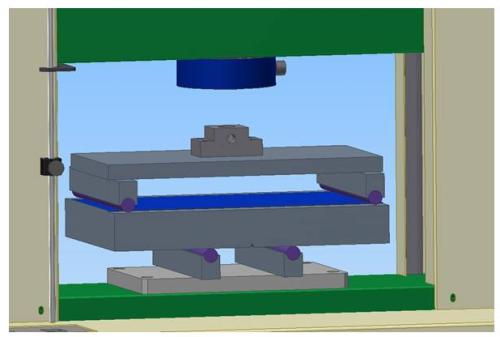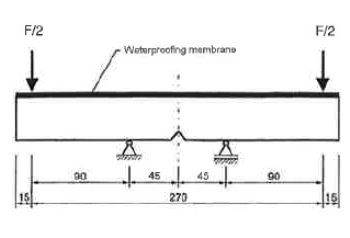A solid concrete structure may probably fail if gaps are not properly bridged and protected. When the concrete structure serves as a containment vessel of fluids, leakage must be prevented or reduced depending upon the usage and purpose. Therefore, crack width control forms an important aspect in many reinforced concrete structures.
Plain Concrete
In case of plain concrete, aggregate locking helps in crack bridging. When concrete is infused with fibers, further bridging action takes place, thus superimposing on the aggregate bridging effect. In a fiber-reinforced concrete (FRC), this combined bridging action can prove advantageous in improving the stress carried across the crack; it is very critical to test it for effectiveness.
Crack Bridging Test
One can easily perform the test on a Tinius Olsen 50K-T tension compression testing machine (Figure 1) utilizing a four point bend test grip called QS4531 grip. The test is performed on a reinforced concrete sample 200 x 300mm to EN1062-72004 Annex C.

Figure 1. Compression testing
Once the test specimen is prepared and placed in a bending test apparatus as shown in Figure 2, a constant force is applied to bend the test specimen until a crack is formed on the exposed sides of the concrete surface. The crack will occur on both sides of the concrete, located near to the border of the watertight material. This crack is measured for a width 0.4, 0.75 and 1.5mm, respectively.

Figure 2. Diagram of a bending test apparatus
When the crack is fixed on the substrate and no perforation occurs in the watertight covering after a period of 24h, it is assumed that the test has been successfully passed.
Conclusion
The Tinius Olsen 50K-T tension compression testing machine is designed to test a range of reinforced concrete structures as well as materials like metals, plastics, rubber, etc., in compression, tension, shear or flexure.

This information has been sourced, reviewed and adapted from materials provided by Tinius Olsen.
For more information on this source, please visit Tinius Olsen.